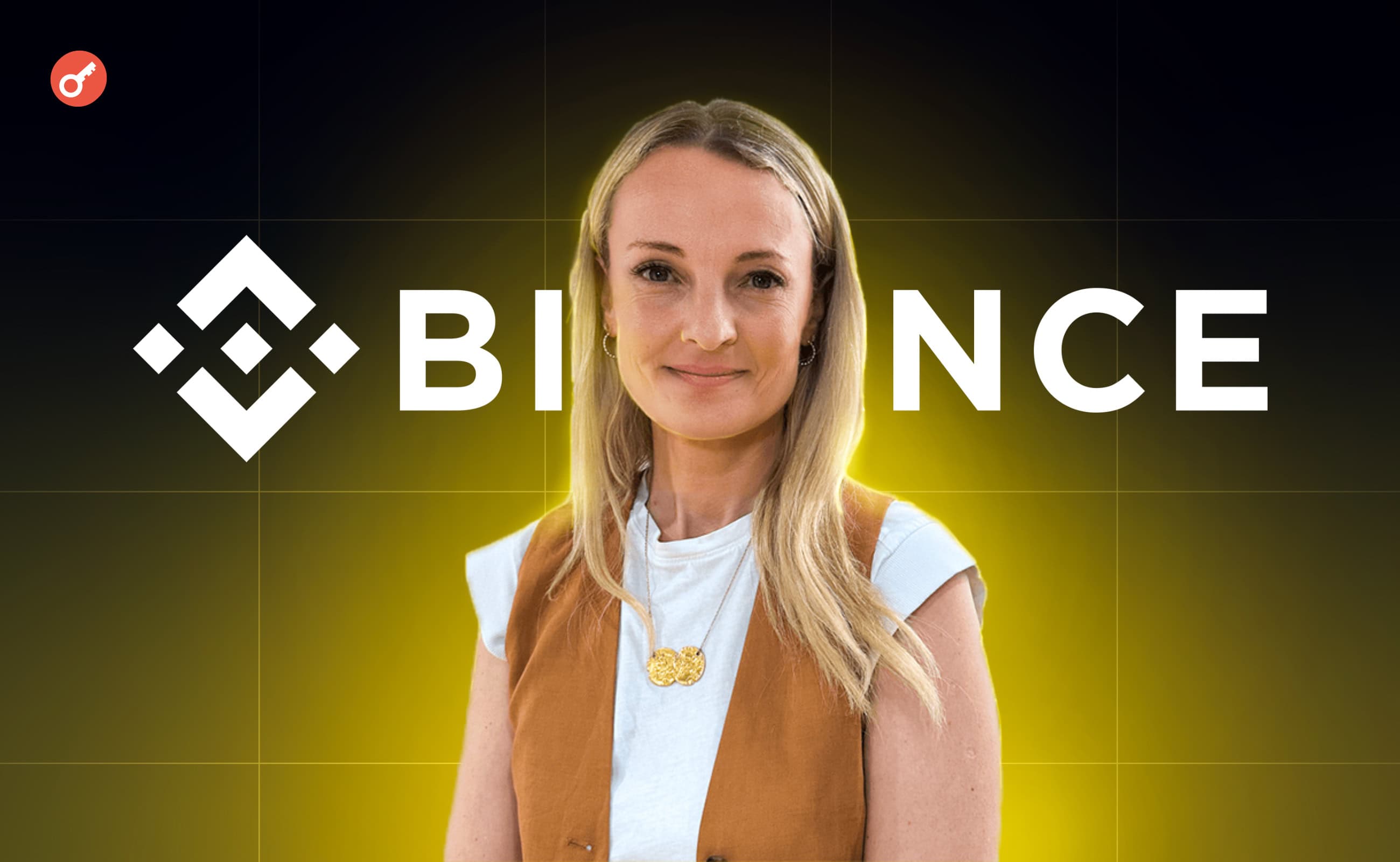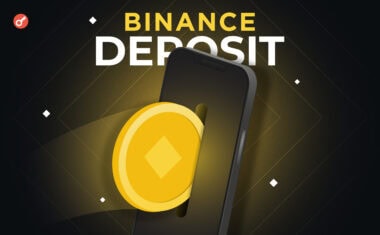We’re bullish on Ukraine: CMO Binance on plans and development of the exchange

The past year has been quite eventful for Binance – the conclusion of the US case, the resignation and subsequent conviction of Changpeng Zhao, and the appointment of a new CEO. Many believed that the company was in danger of losing its leadership position in the wake of these events, but so far it looks like the critics were wrong.
Incrypted spoke with Binance’s Chief Marketing Officer, Rachel Conlan. She discussed the growth of the user base in Ukraine, the company’s educational initiatives and customer preferences in different regions, as well as how advertising in the cryptocurrency market differs from similar activities in the traditional sector.
Let’s talk about you first. You entered the crypto industry in the summer of 2022. It was a bear market and the beginning of the FTX collapse. Why did you decide to enter the crypto space?
I actually started working with the crypto industry and advising crypto brands before I joined it full-time. I was working with a company called “Creative Artists Agency”. We were one of the biggest sports and entertainment groups globally. When the industry – both crypto and Web3 – decided it needed to build more mainstream recognition, they came to us to identify brand partners that would help them drive awareness. […]
I got very deep knowledge of the crypto space by working with a lot of our competitors now. I loved what I did in sports and entertainment. I spent my previous 15 years working on building cultural marketing programs. But what really attracted me to the industry was the overarching mission, which is about financial freedom.
So you are a “believer”?
Yeah, true believer. It really attracted me that there are 2 billion people globally who are unbanked. Crypto and the products that are innovating in the space could enable and emancipate those individuals. Whether that be someone based in Africa or someone in Ukraine who was trying to ensure that their money was safe and that they had the power to transact – that’s very powerful to me.
That was the reason drew me in when everyone else was like: “Why are you entering the industry during a bear market? That’s very unusual”. I’ve been interested in the space for a while. But what really attracted me was that [crypto industry] needed more people who were able to translate it to a wider population and audience. So I felt that obligation. And I haven’t looked back.
It’s been incredible the last two years. Crazy. It’s felt like a decade in two years, but it’s been extraordinary to see the pace at which it innovates and really the impact that we’re having globally. And if you think about Binance, we have 185 million users now across 100 countries, and we haven’t yet scratched the surface of what we could do.
In conversations with others in the industry, I’ve heard a similar sentiment that cryptocurrency projects have a problem explaining to the public what we’re all doing here.
I think it’s one of the biggest barriers [for the beginners] to entry. While the core community and their commitment and “the fandom” that exists around our industry is incredible, it can be quite intimidating for new entrants. It can be the fear of a lack of understanding of the vernacular and the different words. I feel like that’s one thing that we take very seriously at Binance is education in order to be able to empower sophisticated people as well as attract newbies like, for example, my father.
So what does the Chief Marketing Officer at Binance do?
I’m responsible for driving our global, regional and local brand and marketing activities. So that can be varied. It’s working with our founders and CEO to set the vision and bring that to life for where we’re going. […] I’ve got an incredible team of 220 global and local marketers around the world. […] It’s talking about the brand, about our product, whether it be enhancements or new products that we’re launching.
You have experience with traditional companies, you have experience with crypto companies. In your opinion, is the implementation of marketing strategies different in these areas?
I think there’s common principles to how you approach marketing. In any industry you need to know your audience, what your role is and how you’re adding value to them. You need to be innovative and creative and entrepreneurial in the stories that you’re telling. […]
The biggest difference that I’ve observed between traditional and crypto industries – and I’ve experienced across a large, broad range of categories – is the pace of change. The pace at which my marketeers in Binance have to operate is 10 times that of an everyday marketer.
I would also argue that community, while that’s important and critical in any industry, it’s where the crypto industry really responds very quickly from a marketing perspective.
The last point on that, I have a lot of experience from previous companies I’ve worked with in regulated industries, from pharmaceutical to liquor and to traditional banking. I think that is helpful in this space as we move to regulation. While everyone has different opinions on this, I think that it’s important from a user safety and end-user perspective that we adopt those and create our marketing strategy around that. One of the challenges we have in this sector is we have up to 90 different sets of rules. There’s no common framework, there’s no regional framework. It’s exciting then to be in places like Dubai where they have a very clear framework and guidelines in terms of what we can do and what we can’t do and how we best support the user.
Dubai is like the administrative hub for Binance now?
We don’t have one central headquarters or one central office. I think UAE is very special in that they’ve been in line with where they have been developing their own brand. They want to be the most innovative. They want to be the most pioneering. They see the opportunity for crypto. So they’ve cultivated an environment that is very positive for us in the crypto and blockchain space.
And we have the ability to really take advantage of different opportunities like with funds and accelerators that they have here. We have a large number of our employees based here based on the fact that there’s so much we can learn from UAE and how they’re approaching the sector to bring to other markets. And also – one in five people in UAE alone own crypto, that’s extraordinary. I think we can learn a lot from the users who are here and understand what drives them to actually enter into the space and then use that as a way to approach marketing in other markets.
Let’s talk about mass adoption. A lot of people in crypto dream about it. What do you think we need to do to onboard people who aren’t familiar with crypto at all?
For me, it’s education. That has to be our commitment. But educating in a way that’s relevant to the broader base. So one thing is the education platform Binance Academy.
We launched that in 2018. […] In Q1 alone, we added 928 000 new users to Academy. And that’s an indicator of where we are as an industry at the moment of the desire for more education and more learning.
People consume content, educational content in different ways. So we want to make sure it’s relevant for the person that’s consuming, and that could be the trigger to help them understand or want to go a little bit deeper on how they enter. I also think the other really important area that I haven’t touched on yet and very relevant for you is KOLs. They’re our most valuable tool.
I think KOLs provide a transparent and relatable way for new users to understand more because I’m much more likely to listen to someone who looks like me and speaks my language than I am if I see a brand telling me to go join a platform. We’re a global exchange, but we think very locally in how we approach our local markets, especially in countries like Ukraine.
And when we talk about retail users, what are the main drivers of their interest?
I think this is so fascinating right now, because if we look back over the last three months, from the approval of the ETFs to the discussions about halving bitcoin online, this has driven media interest. The media discussing this and us penetrating the cultural zeitgeist, and everyone from major leaders of TradFi to the crypto influencers that we love, have driven so much conversation around this. This has penetrated the cultural zeitgeist. I feel since the last three months every day, I’m getting 10 to 20 messages from friends being like, “How do I enter into the space?” I think there’s a few things that are important here. Number one, it’s the cultural zeitgeist, which then drives media interest. I think price volatility, while it puts us on edge, it’s a great way for people to get excited and to engage.
I think it’s also about innovations and new products. Whether it’s an enhancement or a new product, that drives a lot of commitment and engagement with this space. I think overall, if we see Bitcoin as one of the most searched financial terms at the moment, then we look at meme coins. I know they’re fascinating to this, that suddenly my little brother is like: “Should I buy meme coins?”
Crypto has done such an incredible job at penetrating the cultural zeitgeist, and we’re capitalizing on that at the moment. But institutional investment has been, I think, driving a lot of what is the recent retail interest.
People also try to follow institutional money.
Well, if you think about it, we can use the term of the American dream, which is now maybe more “the Emirate dream”. At the end of the day we always aspire to be better.
I think financial freedom is something that’s very difficult to achieve in the usual paradigms, especially with the civil unrest, political unrest, inflation, and war. This provides a borderless way for you to own your financial freedom and take that power back. I think that’s very compelling to a generation that maybe feels like they don’t have that power like they used to, and where trust is maybe lower in the traditional financial frameworks.
You mentioned ETFs, and we have seen a lot of noise around the bitcoin ETF in the United States. I think the interest will continue to grow. So can we imagine a situation where Binance will be involved in any process of creating, managing and trading ETFs? Maybe outside the United States – here in the UAE or in Hong Kong.
I think we’re very committed to where we are at the moment and ensuring we service the 185 million users we’ve had, we’ve had 6.9 million downloads in Q1 alone. There’s a lot that we can do for our existing retail base. At the moment, ETFs are such an amazing way to bring in maybe the more discerning user like my father that considers that as part of their investment portfolio in order for their retirement. So never say never, but not at this moment.
Binance operates in many regions around the world. Do users’ needs differ from region to region?
So different. If we look at the crypto sector, I think there’s a common trigger point that attracts many in. It’s the mission purpose-driven idea. That’s the common goal where people are in, but I think that it varies depending on what region they’re in.
In less developed countries, we offer, as I mentioned earlier, an opportunity to enter into the financial ecosystem when maybe they haven’t been able to before. I’m not going to name these specific countries, but in certain regions, in South Asia and Africa, that provides an access point where they may not have had that before.
But in markets, say, like the UAE and Saudi, where ultra-high net worth users are based here, they’re here [in crypto] because it’s a part of their wealth management. Whether it be 3% to 5% they’re investing or more, it’s really much more of a robust tool for them.
I hope you don’t mind me bringing this up, but for Ukraine, it provides a way for you to know that your assets are stored somewhere that is secure, safe and transparent, and somewhere that allows you to be able to access them anywhere.
So the use cases vary. I think the common attraction of this industry, there’s a common attraction, and then there’s individual use cases, and they vary by region and market.
I would argue one of the most interesting markets and regions where we could learn so much from is Asia. They’re so sophisticated in terms of their adoption of crypto and Web3 technologies. Really, what I see is them setting the agenda for a lot of where we’re going in the future and the innovations.
If we mention local markets, let’s talk about Ukraine. What trends or changes in this market would you highlight?
Actually, our Ukrainian market has grown extraordinarily. We increased by 26% last year in Ukraine. And our projections are very aggressive. We’re hoping to get to 10 million users in the next two years. I would say we’re very bullish on Ukraine. We’re very committed to the market there. I think we’ve got a very strong team that are trying to understand how we can support a community that really is now very similar to the Irish, scattered across Europe and across different markets. We look to the Ukrainian domestic population and the Ukrainian diaspora to understand how we can serve them more.
So you have big plans for Ukraine.
Big plans. We’re also very committed to our charity initiatives there. We’ve just launched a series of initiatives, and it really is around financial literacy, crypto education, and how we ensure we’re supporting the current audience and also introducing the next generation so that they can be educated on this. […] The most powerful tool in Ukraine is the community like yourselves and the KOLs that have worked to share the message and help people understand [crypto].
We just had our first meetup recently, our first offline event since the [full scale] war in Ukraine. It was incredible. I think we had over 800 attendees there. It’s amazing to see. I feel like we’ve just scratched the surface there. There’s so much more we can do.
Is Binance planning any new partnerships with Ukrainian companies?
We’ve done marketing partnerships in the past. But our big focus, as has been since 2022, is on our strategic charity initiatives. We believe that’s going to be the way to service the user in the best way.
We have one partnership with Superhuman Foundation, and we’ve just launched another partnership with the Children’s Hero Foundation. Then we’ve also announced a partnership recently with DataIsland, which is an AI integration, which is all about financial literacy for children as well. Those are really a core part of some of our big plans over the course of the next year.
Let’s talk about your products. One of Binance’s last major products was Web3 Wallet. And we have noticed that other centralized exchanges are also running DeFi-centric products. Can you tell us why you and your competitors are so interested in DeFi?
There’s so much that CeFi and DeFi learn from each other. And even if you look at the traditional finance industry, they’re taking so many technologies from DeFi to be able to improve their overall user and/or stakeholder experience.
I think the Web3-wallets are critical for our industry and for Binance and other brands because it’s a very easy entry point to explore Web3 and understand whether you are someone who’s very early stage or someone who’s more sophisticated. And arguably, I would think that in the next 5 to 10 years, you’ll probably have one to two wallets the same way people have one to two bank accounts.
I would like to ask about the situation with CommEX. They bought Binance’s business in Russia, worked for a few months and closed their operations. When the situation happened, the representative of Binance told us that CommEX was unable to fulfill its obligations under your deal. Can you give some details?
It’s still the same statement. Unfortunately, I’m not going to be able to provide. What I can say is that it’s an unfortunate situation, but we’re very committed. Our goal is to try and support the migration of those existing Russian users in any way we can. But our policy has not changed since CommEX was not able to fulfill the terms of their deal with us.
So Binance is still looking for a buyer?
Yes.




